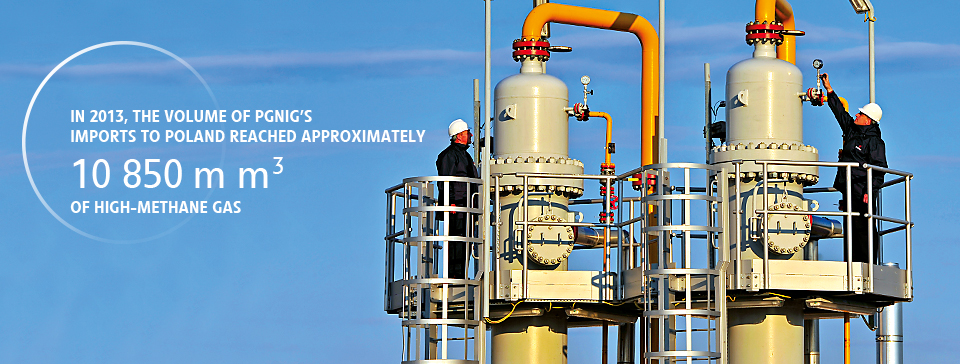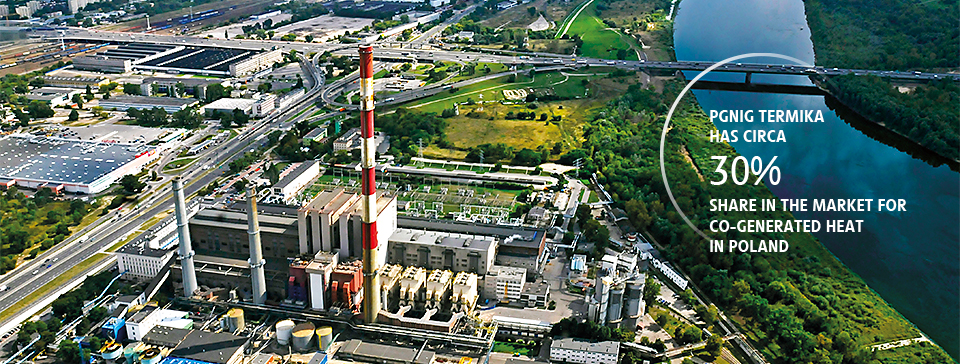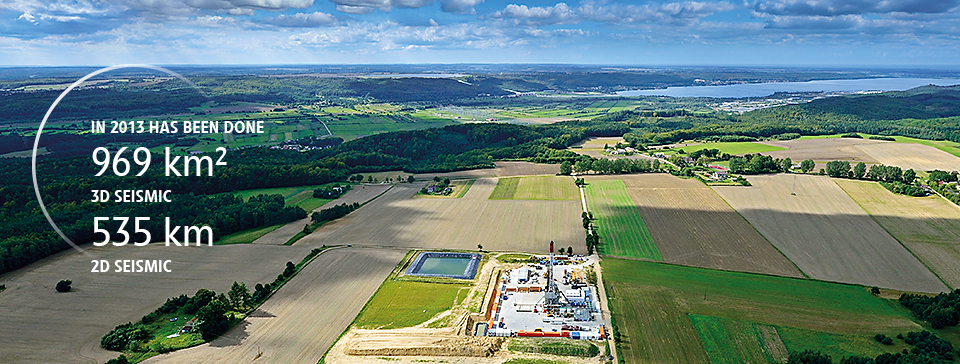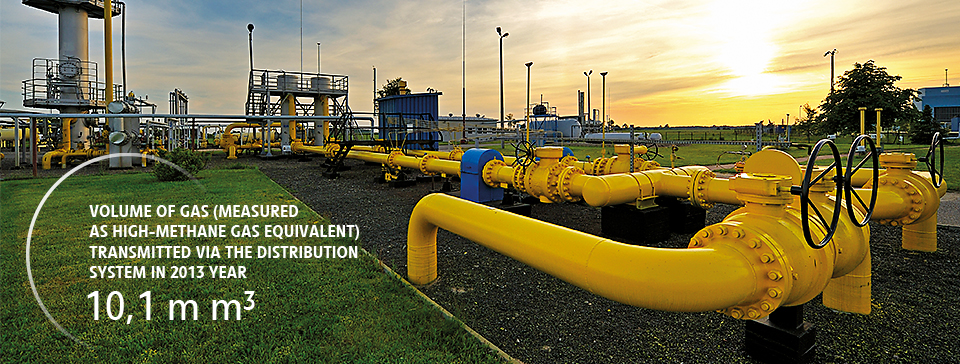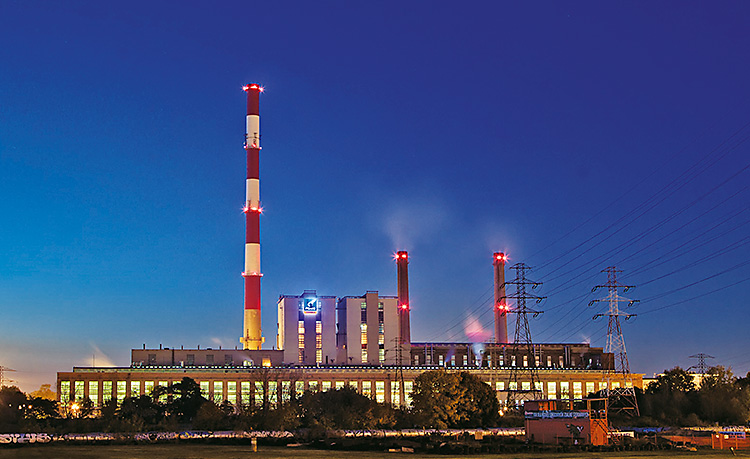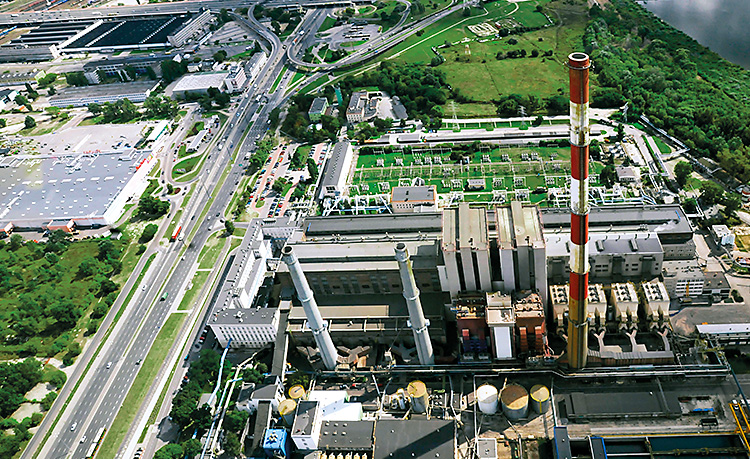Heat and electricity generation
On the path to the achievement of a major strategic goal of growing its power business, the PGNiG Group continues to embark on new projects, both large and small, involving construction of new gas-fired capacity.
The Group generates and sells electricity and heat through its Generation segment, whose activities are conducted by PGNiG TERMIKA, a company also serving as the Group’s competence centre for heat and electricity generation and for implementation of heat and power projects.
PGNiG Termika SA
With a total installed heat and power generation capacity of respectively 4.8 GWt and 1.0 GWe, PGNiG TERMIKA earns revenue chiefly from sales of heat, electricity, system services, and certificates of electricity origin. Its annual average heat and power sales amount to 40.2 PJ and 3.8 TWh, respectively, and satisfy 70% of the heat demand in the Warsaw metropolitan market. The Group also has an approximately 3% share in the domestic power generation market and an approximately 30% share in the market for co-generated heat.
The CCGT project implemented jointly with the Tauron Group in Stalowa Wola (PGNiG holds 50% of the 450 MW capacity) and a range of new projects to build gas-fired capacity will facilitate the implementation of the Group’s strategy in the power segment. Investments in power generation perfectly match the PGNiG Group’s mission, which is to develop and increase Company value in line with the principles of sustainable development and with due consideration for the natural environment.
Key Events
- OnOn October 11th 2013, an agreement was signed with the contractor for conversion of the generation unit of OP-230 boiler No. 1 into a biomass-fuelled one, along with construction of biomass unloading, storage and feeder systems at the Siekierki CHP plant.
- On October 30th 2013, PGNiG TERMIKA acquired 50% of the shares in Elektrociepłownia Stalowa Wola SA.
Financial performance in 2013
The Generation segment’s revenue from sale of heat and electricity reached PLN 2,063 m, having increased by PLN 106 m relative to 2012. Thanks to a 1% reduction in operating expenses, the segment’s operating profit came in at PLN 144 m, up by PLN 129 m year on year. The segment’s strong performance was attributable to a 9% increase in the tariff rates of heat as of July 2013 combined with a reduced cost of fuels for heat and electricity generation, thanks to a reduction in biomass co-burning and other factors, as well as lower amortisation costs of the CO2 emission allowances identified at the time of the acquisition of PGNiG TERMIKA.
Location of PGNiG TERMIKA’s plants in Warsaw
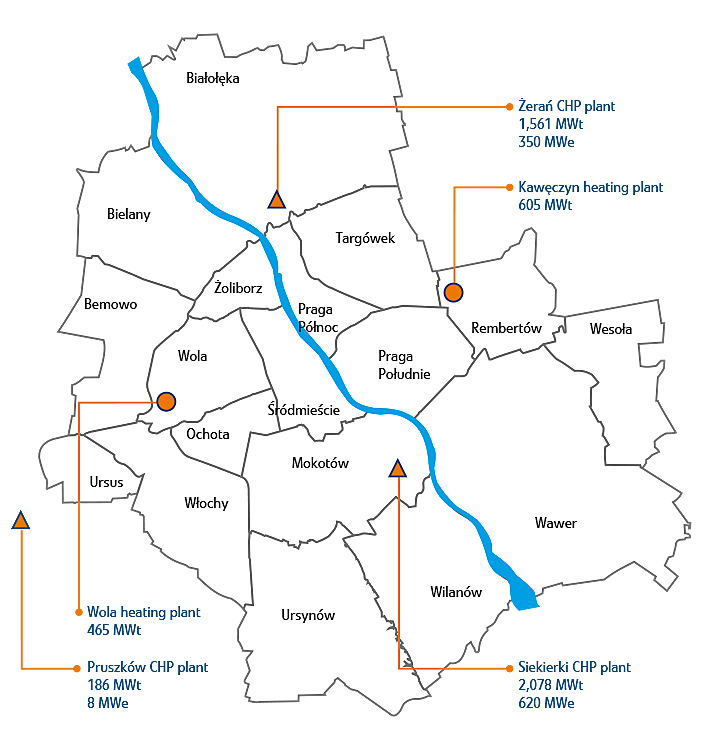
Capex projects
In 2013, the Generation segment incurred capital expenditure of PLN 257 m, chiefly on projects related to environmental, development and fuel diversification programmes. In 2013, the construction of an SCR system for four unit boilers at the Siekierki CHP plant was completed.
To pursue the Group’s strategy of continued development of the power segment, in 2013 PGNiG TERMIKA was looking for different scale co-generation opportunities across Poland. Several promising projects were identified and the company established relationships with a number of manufacturers from the chemical and food industries interested in gas-fired co-generation and power outsourcing, and with municipal power companies seeking to build co-generation units supplying heat to the municipal network. At present, the parties are reviewing the technical and economic feasibility of the projects and negotiating the terms of prospective business cooperation.
As part of its growth strategy, PGNiG TERMIKA executed contracts for the production and supply of biomass from energy willow plantations and planted willow trees over an area of 386 ha. In doing this, the company expects to secure continuing supplies of agricultural biomass for the PGNiG TERMIKA biomass combustion units.
Conversion of the OP-230 K1 boiler and construction of a biomass storage unit
On October 11th 2013, an agreement was signed with Andritz Energy & Environment GmbH (consortium leader) for conversion of the generation unit of OP-230 boiler No. 1 into a biomass-fuelled one, along with construction of biomass unloading, storage and feeder systems at the Siekierki CHP plant. Following completion of the project, the unit’s capacity will be raised to 185 t/h, with a thermal input of 146.6 MWt. In this way, PGNiG TERMIKA will diversify its fuel mix and ensure that the unit’s operation accommodates the heat demand in the Warsaw metropolitan area. The conversion of the coal-fired boiler into a biomass-fuelled one will eliminate the need to install an FGD and deNox unit to comply with the Industrial Emissions Directive. The company plans to complete the project in the third quarter of 2015.
New Pruszków CHP plant
In 2013, a decision was made to modify the Pruszków CHP plant to increase its co-generation capacity based on gas engines, and to reduce its coal consumption by reconstructing the water boilers and modifying them to meet future, more stringent environmental requirements. In the same year, a gas network connection agreement with Polska Spółka Gazownictwa was signed to secure gas supplies and a request was submitted to PGE Dystrybucja to specify the grid connection conditions for reception of the plant’s electricity output. In December 2013, a tendering procedure for conversion of the water boilers was announced. Preparation is already underway of the tender documentation for construction of the co-generation system, and the whole project is scheduled for completion in 2016.
CCGT unit in Stalowa Wola
On October 30th 2013, PGNiG TERMIKA acquired 50% of the shares in Elektrociepłownia Stalowa Wola SA from PGNiG.
The project for the construction and future operation of a 449.16 MW gas-fired CHP plant is being carried out jointly by the PGNiG Group and the TAURON Group, each holding a 50% interest. The CHP plant will produce heat in the form of hot water for the city’s residents and process steam for nearby industrial facilities. It will be the largest unit of its kind in Poland. According to the agreement between the project partners, revenue from sale of electricity will be shared pro rata to their interests in the Stalowa Wola CHP plant. It is estimated that the Stalowa Wola unit will generate approximately 3,500 GWh of electricity per year, while burning approximately 600 m m³ of gas. At the same time, it will produce low carbon dioxide, SOx and NOx emissions, in line with the EU’s energy and climate policy.
In 2013, as part of the Stalowa Wola CCGT project, financing agreements for the CCGT unit were concluded and the construction work began. The work included the construction of an electricity switching substation with control room, and foundations for the unit’s main installations. Foundations for the recovery boiler and gas turbine were laid, and work on foundations for the steam turbine is in the final phase. The support structure for the gas turbine building was completed and construction of the steam turbine building commenced. Also, phase one of work on the San river dam system was completed. The project is due for completion at the end of 2014 or beginning of 2015. The CHP plant will be placed in commercial operation at the end of the second quarter of 2015.

